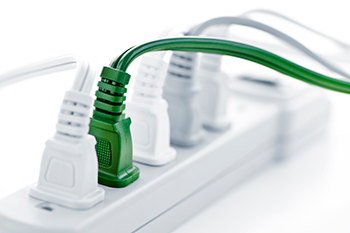
The deadly fire, early in April, at Trump Tower in Manhattan was deemed and accident, and the New York City Fire Department announced in mid April that "multiple overloaded power strips" were the cause of the fire. Reports were also made that there were no sprinklers, which at the time the high-rise apartment opened, were not required by law; when the city passed a law in 1999 requiring sprinklers in new residential high-rises, updates to the code never required older buildings to be retrofitted with sprinkers.
Kristin Bigna wrote a Blog Post on April 20, 2018 for the NFPA XChange that focuses on the cause of the fire and its connection to the Fire Code.
 A common code violation with regards to electrical safety provisions in NFPA 1, Fire Code, relates to power strips (referred to as power taps in the Code.) Section 11.1 of NFPA 1 provides provisions for basic electrical safety. Topics addressed in this section include relocatable power taps, mutiplug adapters, extension cords, temporary installations and building disconnect. The approval of new electrical installations or approval of modifications to an existing electrical system is a function typically performed by an electrical inspector or other building code enforcement official using the requirements of NFPA 70®, National Electrical Code®. A common code violation with regards to electrical safety provisions in NFPA 1, Fire Code, relates to power strips (referred to as power taps in the Code.) Section 11.1 of NFPA 1 provides provisions for basic electrical safety. Topics addressed in this section include relocatable power taps, mutiplug adapters, extension cords, temporary installations and building disconnect. The approval of new electrical installations or approval of modifications to an existing electrical system is a function typically performed by an electrical inspector or other building code enforcement official using the requirements of NFPA 70®, National Electrical Code®. 
Read the Blog here or click on the image.
|
|

